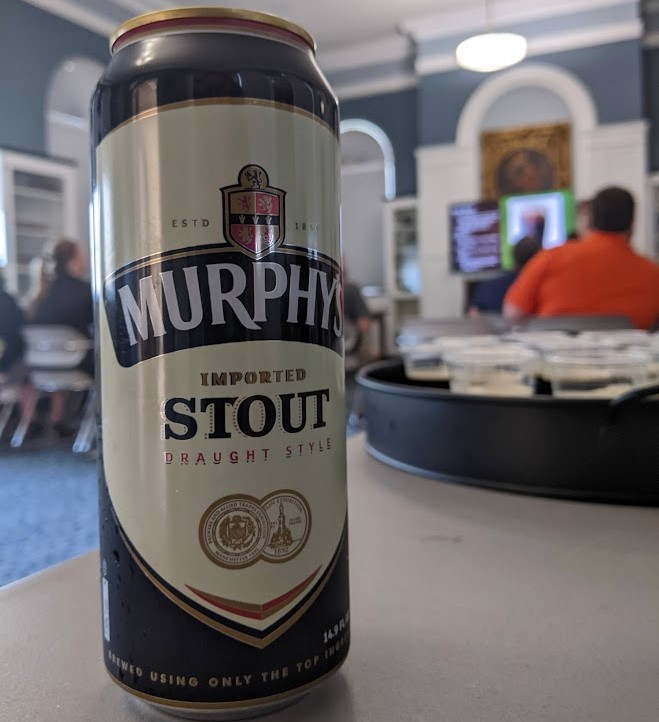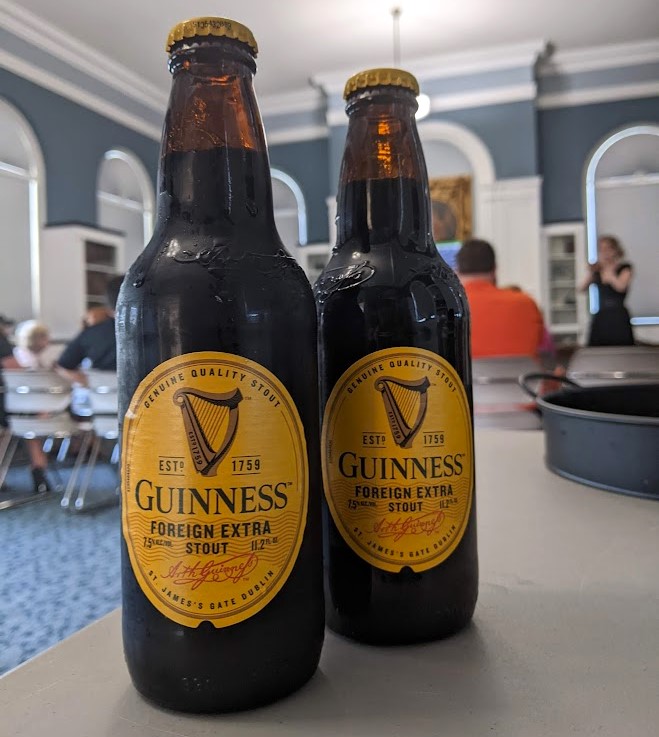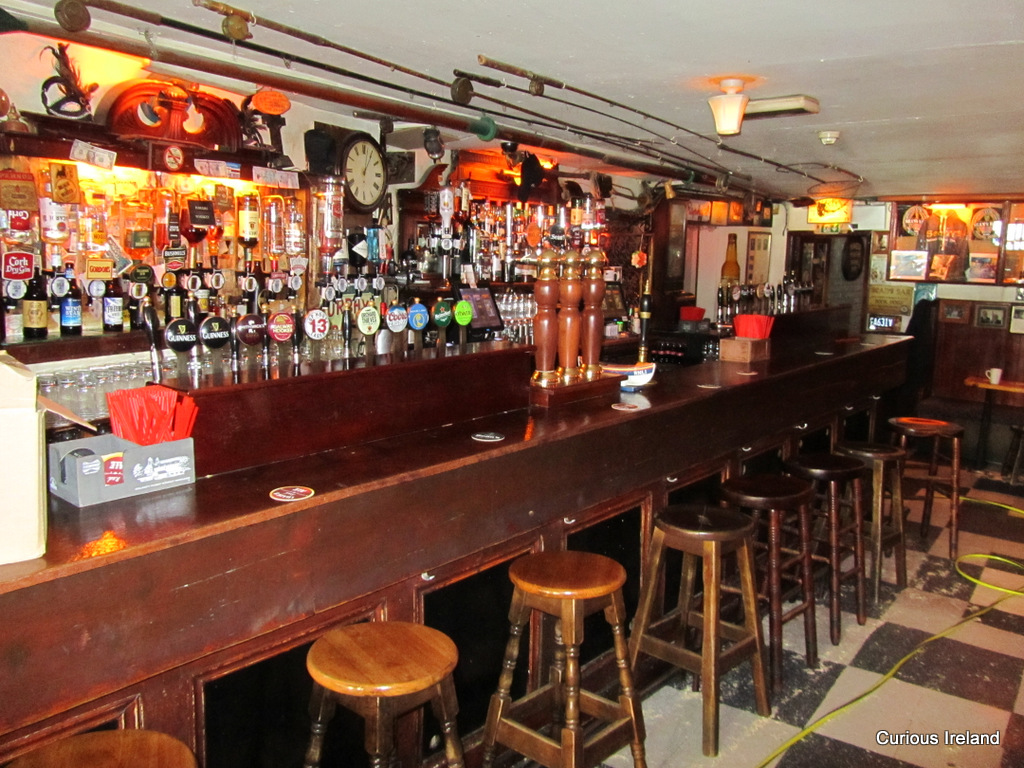
For this month's session of Ale Together Now, we explored the wonderful beer style of Irish ales. As we move into spring, the roasty, malty flavors of Irish styles are a perfect compliment to the season, featuring chocolate and caramel flavors with little to no hop profile. They're flavorful, sessionable, and not too heavy. We tend to highlight Irish ales every spring for Ale Together Now, and this year we focused on Irish reds and stouts.
Although Irish ales are similar to English and Scottish ales, Irish ales have their own unique characteristics. Irish ales are brewed with roasted barley or oats, tend to have a reddish hue and a dry finish, and feature very little hop profile. Some Irish ales are also nitrogenized, providing a very creamy mouthfeel with little to no carbonation. Main Irish styles include the Irish red, stouts, and gruit beers. The cool, wet environment of Ireland is ideal for growing barley, but is not a good fit for growing hops. Gruit beers have been popular in Ireland because, unlike other styles, gruit beers are brewed with local herbs as opposed to hops.

A variety of Irish ale styles, pictured from KegWorks.
Irish reds are a particularly popular beer in Ireland, and are also well-loved in the US in March. Featuring a lovely copper color resulting from malted barley, Irish reds are also brewed with oats and English hops, giving them a caramel-like flavor and a smooth, medium-light body. Irish moss
is also used as a fining agent in the brewing process.

We sampled Maltings Irish red from Sullivan's Brewing Company in Kilkenny, Ireland. This refreshing beer is balanced and smooth, with wonderful malt and caramel flavors.
Irish reds were relatively unknown until the 18th century, though some documents do reference "red ales" earlier than that. The Irish red was brewed as an Irish adaptation of the English special bitter (ESB), but with the use of malted barley and Irish moss. Multiple breweries embraced this style: Smithwick's Brewery was founded in 1710 in County Kilkenny, and brewed an ale with local grains and flemish hops; Lady's Well Brewery was founded in 1854 in County Cork, and brewed stouts and reds.

Slea Head Red is an Irish red from River's Edge Brewing Company in Milford. This style features a deep red copper color and a biscuit and toasty malt character, balanced by bittering hops.
After sampling a few Irish reds, we dove into another popular Irish ale-- stouts! Irish stouts are dark, coffee-like roasted ales with a full body and a dry, clean finish. Made with black malts, this style was originally called Leann dubh, meaning black beer. Irish stouts tend to range from 4.0-5.5% ABV, and include varieties such as dry stout, sweet stout, extra stout, foreign or export stout, and draught stout.

Draught Stout from Murphy's Brewery in County Cork, Ireland is just 4% ABV, with toffee and coffee undertones and little to no carbonation.
Irish stouts have a history dating back to 18th century England, when brewers adapted the London porter into a new style through the use of a malt kiln. Malt kilns, which resulted in black malts for brewing, created beers with a more robust flavor and a little extra bitterness. The 19th century welcomed the dry stout, which differed from the traditional 'sweet stout', which was popular in England. Special export/foreign stouts developed around 1801, and were brewed with extra hops to make them more shelf stable and slightly more bitter. Guinness was the most popular brewery by 1833, developing nitro/draught stouts (including the popular 'surge and settle' style of pouring) and draught cans (which include a widget, a small hollow disk that releases gas into the beer as it is poured to create the head).

Foreign Extra Stout by Guinness Brewing Company in Dublin, Ireland is 7.5% ABV, with tremendous coffee flavors and roasty bitterness.
And of course, we cannot talk about Irish ales without exploring the public house. Public houses, or "pubs", are meeting houses for drinking and connection. A pub is typically a casual community featuring hearty food, music, beer, and cider. The nonic pint, a glass that bulges outward a few inches from the top, is popular in pubs. The public house has a long history, dating back to Roman "taberne" and Anglo-Saxon ale houses. These ale houses were a great alternative for members of the working class, who did not want to attend higher-end gentlemen's and ladies clubs. Sean's Bar, located in Athlone, Ireland and established in AD 900, is thought to be the oldest and longest-running pub in the world.

Learn more about Sean's bar here!
With the warmer weather and longer days that spring has to offer, be sure to enjoy an Irish ale in front of a bonfire or on the porch! Irish reds and Irish stouts are cozy, sessionable, and delicious ales-- be sure to enjoy a few before the summer heat hits us!
Cheers!